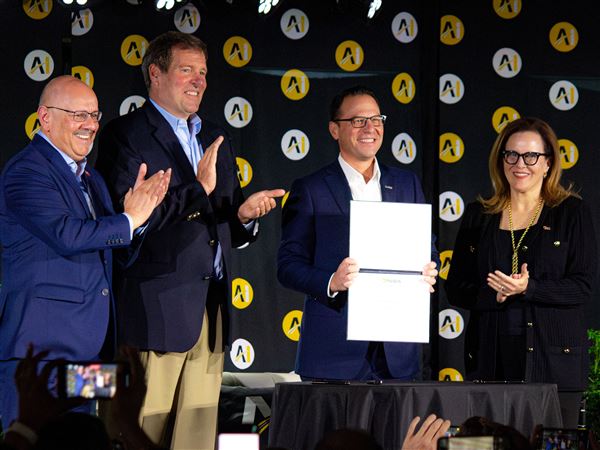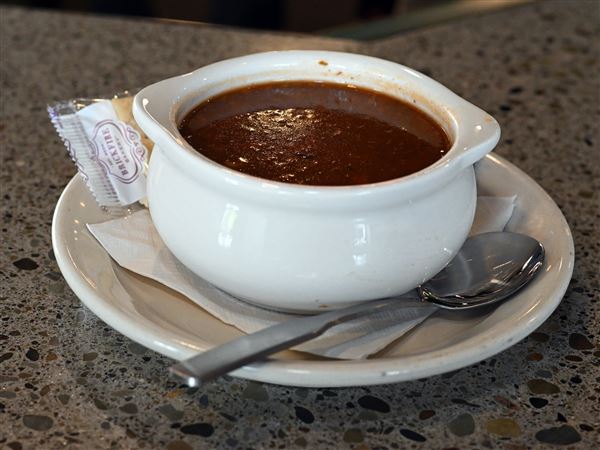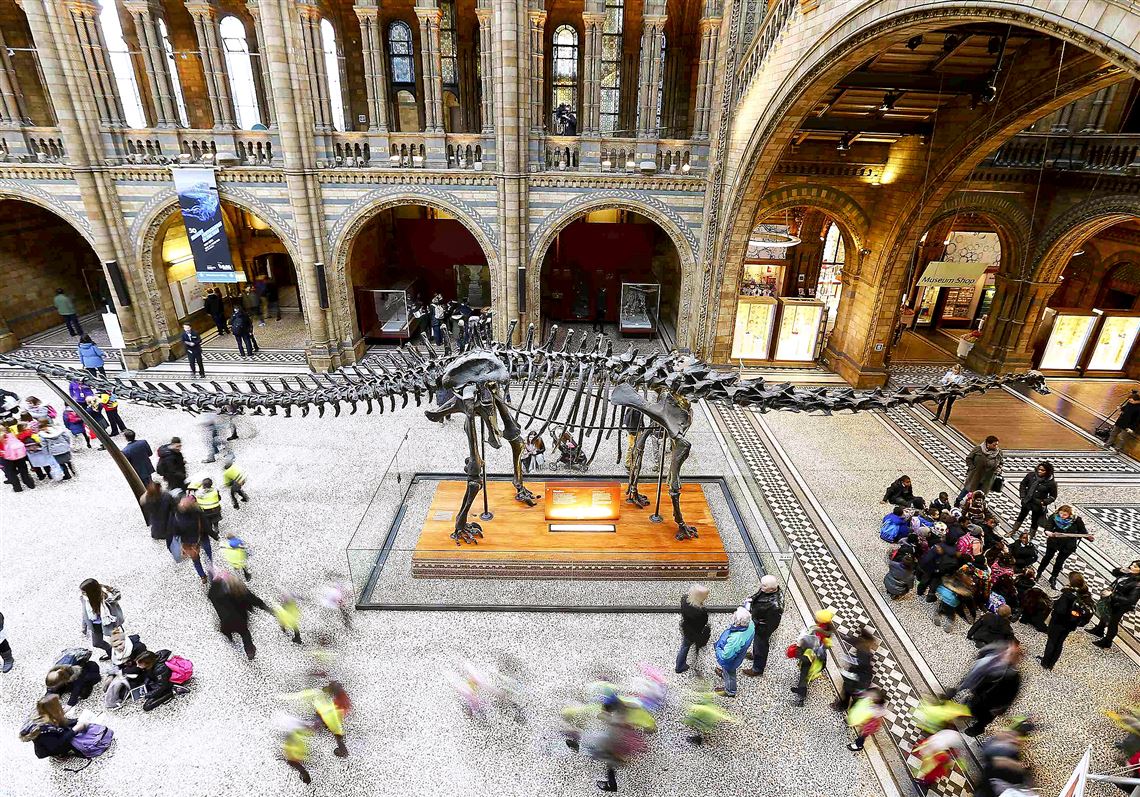In 1899, Andrew Carnegie funded the discovery of a nearly complete dinosaur fossil, named Diplodocus carnegii. Shortly afterward, England’s King Edward VII sat down for a conversation with the Pittsburgh industrialist.
“Oh! I say, Carnegie,” he reportedly said. “We must have one of these in the British Museum.’’
And for more than a century, a plaster replica of “Dippy” the dinosaur, sent from Pittsburgh to the king, has been a prominent part of the Natural History Museum in London.
Dippy’s skeleton has starred in movies, from the recent “Paddington” to the 1975 Disney film “One of Our Dinosaurs Is Missing.” He has his own Twitter account (@NHM_Dippy) with thousands of followers. And he is the subject of a museum-produced book, “Dippy: The Tale of a Museum Icon.”
But on Thursday morning, the museum announced plans to change that — Dippy will be relocated from his current position as a centerpiece of the museum’s main hall to either elsewhere on the museum grounds or as a traveling exhibit. In Dippy’s place, the museum plans in 2017 to hang the bones of a blue whale that have been on display there since 1938.
Many in the United Kingdom aren’t happy.
In less than a day, more than 16,000 people signed an online petition urging the museum to leave Dippy undisturbed. The Twitter hashtag #savedippy was trending in England on Thursday, joined by hashtags #TeamDippy and #TeamWhale.
“Dippy’s been kind of emblematic of the museum for quite some time,” said Richard Sabin, collection manager of vertebrates in the department of life sciences. “Some would say it’s a misrepresentation, but it’s sometimes labeled the dinosaur museum.”
The discovery of Dippy was significant because it was “science’s first good look at one of these giant long-neck dinosaurs, the largest animals that have ever lived on land,” said Matt Lamanna, assistant curator of vertebrate paleontology at the Carnegie Museum of Natural History in Oakland. The Carnegie Museum houses the original Dippy skeleton, and although England received the first replica, nearly a dozen others are in other museums around the world.
The decision to replace Dippy with the blue whale wasn’t made lightly, Mr. Sabin said. The museum believes the whale is a more appropriate representation of the museum’s focus on biodiversity, sustainability, and origins and evolution.
The blue whale specimen at the museum, acquired for 250 pounds after it was found beached and injured in Ireland in 1891, is actual bones and not a replica, underscoring the museum’s commitment to scientific inquiry and discovery. As the whale is moved, all of its bones will be scanned for scientific research.
“As guardians of one of the world’s greatest scientific resources, our purpose is to challenge the way people think about the natural world, and that goal has never been more urgent,” museum director Sir Michael Dixon said in a news release.
“The blue whale serves as a poignant reminder that while abundance is no guarantee of survival, through our choices, we can make a real difference.”
Daryl Cross, assistant director of corporate sponsorship at the Carnegie Museums of Pittsburgh, understands the rationale for replacing the dinosaur.
But as someone who grew up in London, the announcement was difficult to process.
“Like any 6- or 7-year-old boy, I fell in love with the dinosaurs,” he said. “I was enthralled by Diplodocus — it drove the imagination.”
Change isn’t easy, Mr. Sabin said, especially when Dippy made such an impression on so many.
“They want to bring their children and have them do the same things,” he said. “But I truly believe that we’re doing the right thing and we’re doing it for the right reasons.”
First Published: January 30, 2015, 5:00 a.m.
















